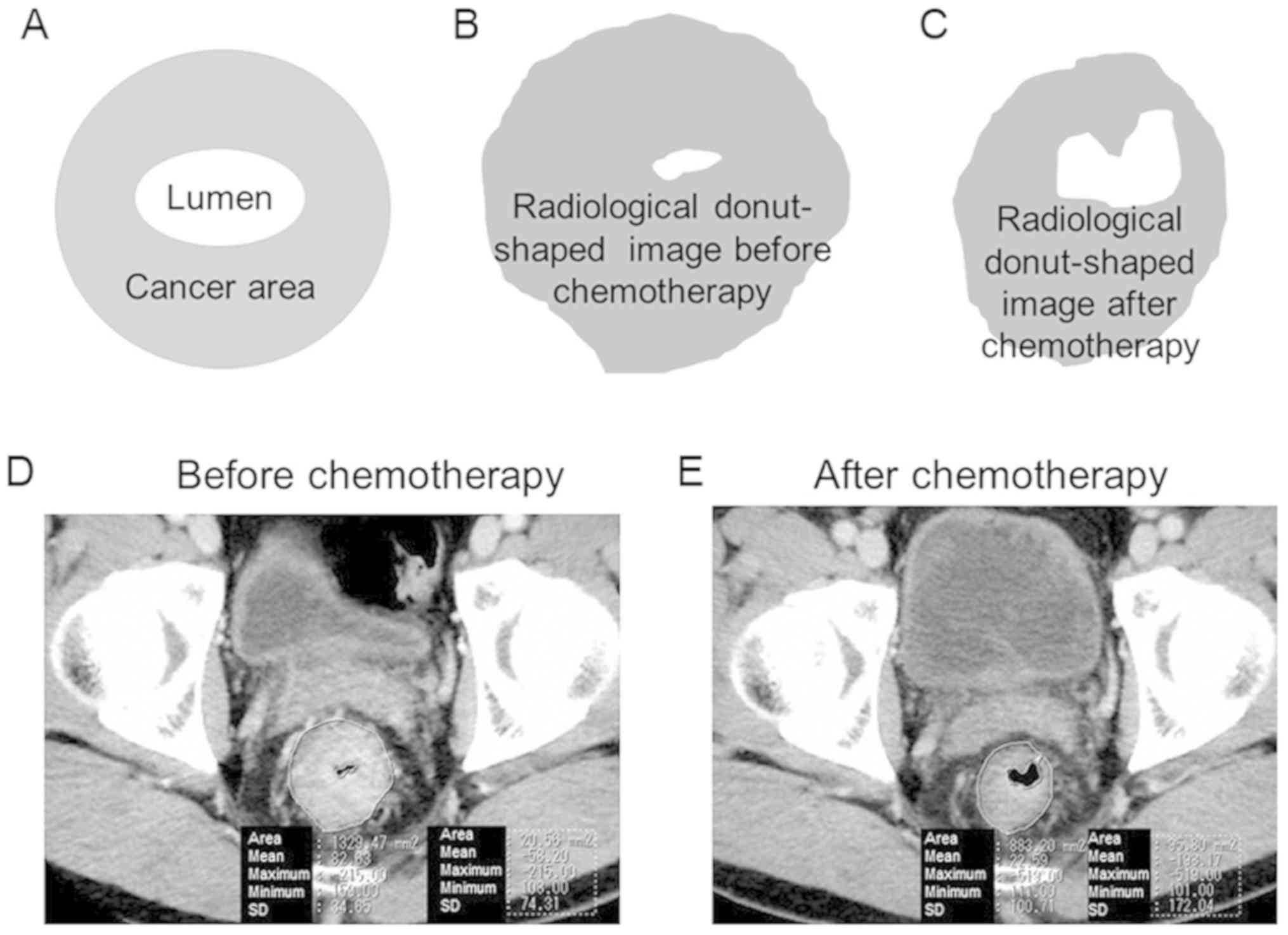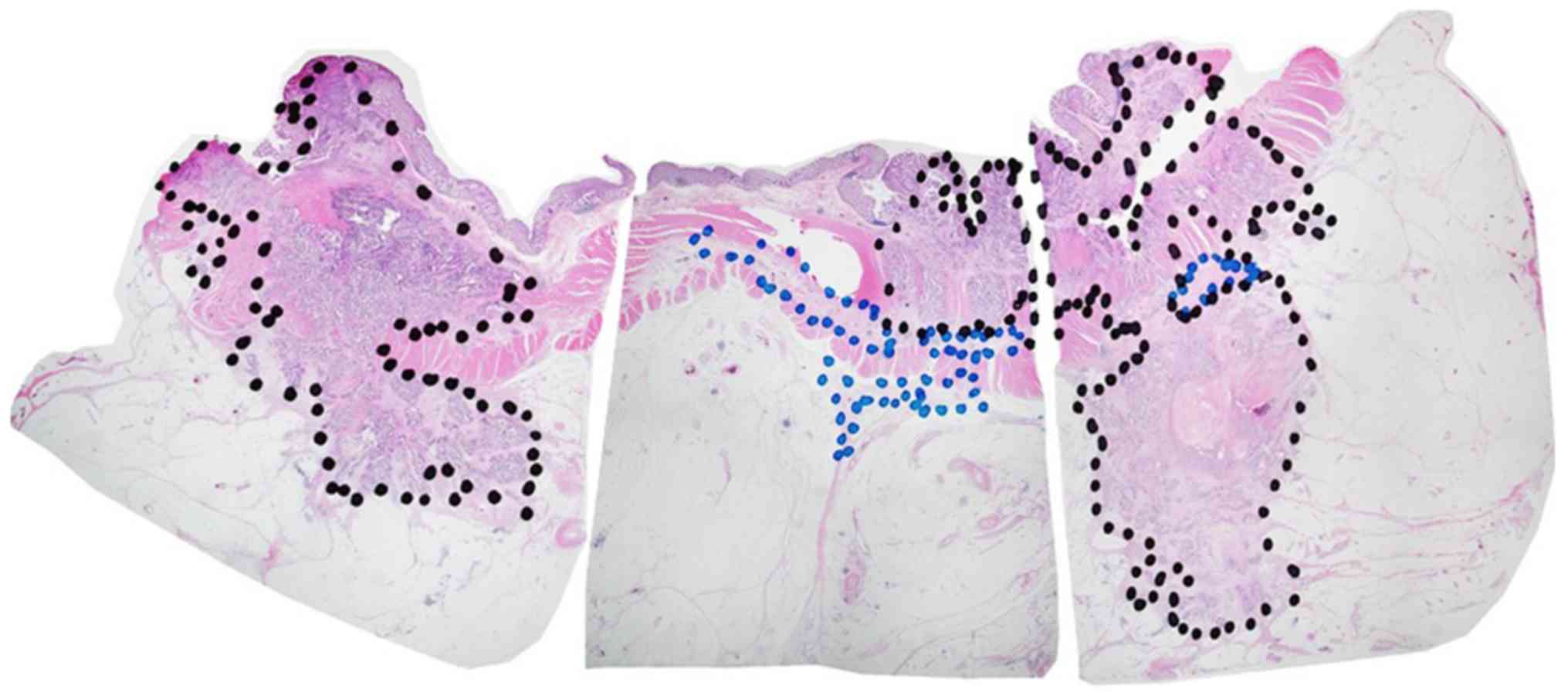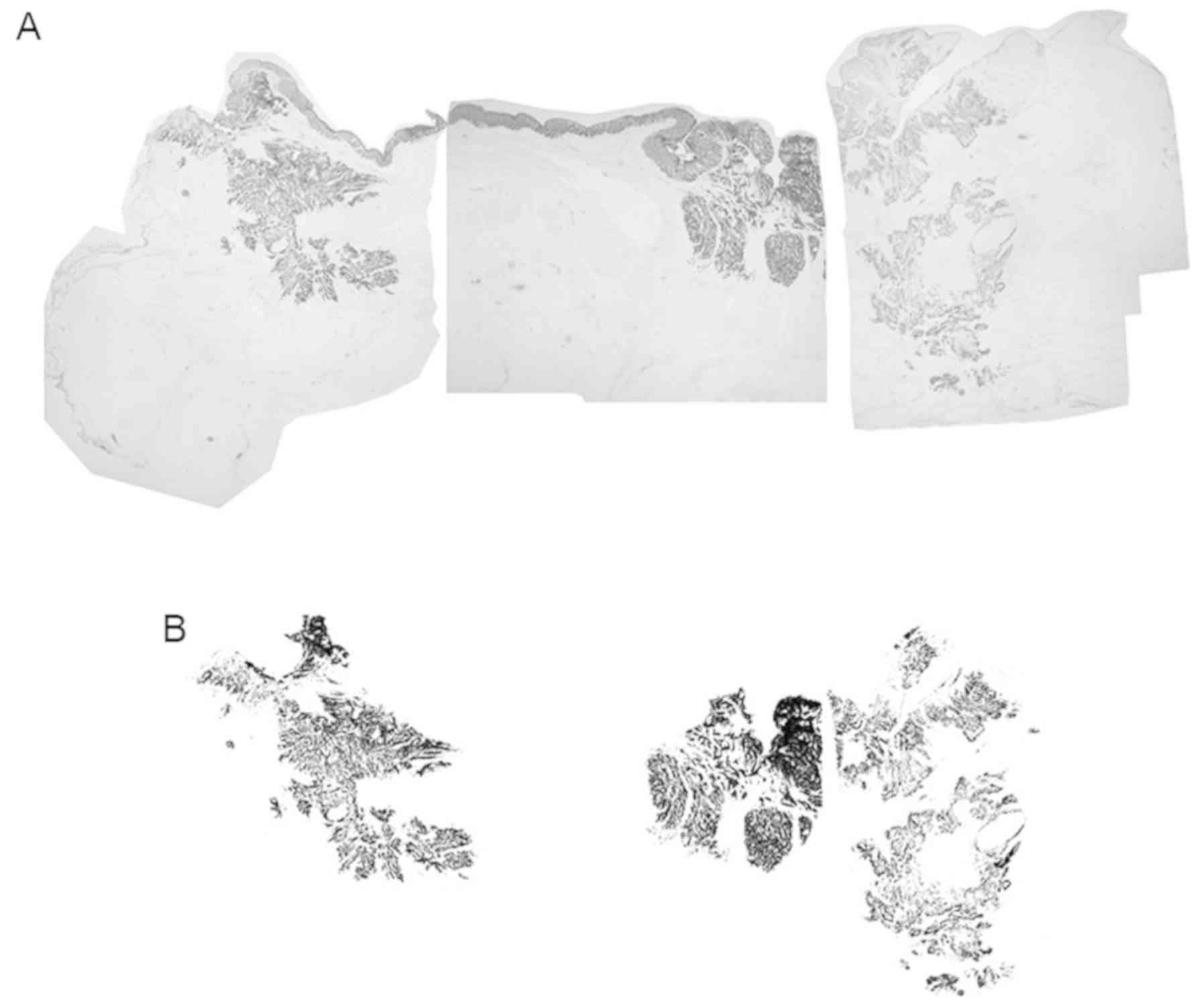|
1
|
Hori M, Matsuda T, Shibata A, Katanoda K,
Sobue T and Nishimoto H; Japan Cancer Surveillance Research Group,
: Cancer incidence and incidence rates in Japan in 2009: A study of
32 population-based cancer registries for the monitoring of cancer
incidence in Japan (MCIJ) project. Jpn J Clin Oncol. 45:884–891.
2015. View Article : Google Scholar : PubMed/NCBI
|
|
2
|
Díaz-González JA, Calvo FA, Cortés J,
García-Sabrido JL, Gómez-Espí M, Del Valle E, Muñoz-Jiménez F and
Alvarez E: Prognostic factors for disease-free survival in patients
with T3-4 or N+ rectal cancer treated with preoperative
chemoradiation therapy, surgery, and intraoperative irradiation.
Int J Radiat Oncol Biol Phys. 64:1122–1128. 2006. View Article : Google Scholar : PubMed/NCBI
|
|
3
|
Rödel C, Martus P, Papadoupolos T, Füzesi
L, Klimpfinger M, Fietkau R, Liersch T, Hohenberger W, Raab R,
Sauer R and Wittekind C: Prognostic significance of tumor
regression after preoperative chemoradiotherapy for rectal cancer.
J Clin Oncol. 23:8688–8696. 2005. View Article : Google Scholar : PubMed/NCBI
|
|
4
|
Valentini V, Coco C, Picciocchi A,
Morganti AG, Trodella L, Ciabattoni A, Cellini F, Barbaro B,
Cogliandolo S, Nuzzo G, et al: Does downstaging predict improved
outcome after preoperative chemoradiation for extraperitoneal
locally advanced rectal cancer? A long-term analysis of 165
patients. Int J Radiat Oncol Biol Phys. 53:664–674. 2002.
View Article : Google Scholar : PubMed/NCBI
|
|
5
|
Vecchio FM, Valentini V, Minsky BD, Padula
GD, Venkatraman ES, Balducci M, Miccichè F, Ricci R, Morganti AG,
Gambacorta MA, et al: The relationship of pathologic tumor
regression grade (TRG) and outcomes after preoperative therapy in
rectal cancer. Int J Radiat Oncol Biol Phys. 62:752–760. 2005.
View Article : Google Scholar : PubMed/NCBI
|
|
6
|
Chee CG, Kim YH, Lee KH, Lee YJ, Park JH,
Lee HS, Ahn S and Kim B: CT texture analysis in patients with
locally advanced rectal cancer treated with neoadjuvant
chemoradiotherapy: A potential imaging biomarker for treatment
response and prognosis. PLoS One. 12:e01828832017. View Article : Google Scholar : PubMed/NCBI
|
|
7
|
Hasegawa S, Goto S, Matsumoto T, Hida K,
Kawada K, Matsusue R, Yamaguchi T, Nishitai R, Manaka D, Kato S, et
al: A multicenter phase 2 study on the feasibility and efficacy of
neoadjuvant chemotherapy without radiotherapy for locally advanced
rectal cancer. Ann Surg Oncol. 24:3587–3595. 2017. View Article : Google Scholar : PubMed/NCBI
|
|
8
|
Peeters KC, van de Velde CJ, Leer JW,
Martijn H, Junggeburt JM, Kranenbarg EK, Steup WH, Wiggers T,
Rutten HJ and Marijnen CA: Late side effects of short-course
preoperative radiotherapy combined with total mesorectal excision
for rectal cancer: Increased bowel dysfunction in irradiated
patients-a Dutch colorectal cancer group study. J Clin Oncol.
23:6199–6206. 2005. View Article : Google Scholar : PubMed/NCBI
|
|
9
|
Chen FC, Mackay JR, Woods RJ, Collopy BT,
Fink RJ and Guiney MJ: Early experience with postoperative adjuvant
chemoradiation for rectal carcinoma: Focus on morbidity. Aust N Z J
Surg. 65:732–736. 1995. View Article : Google Scholar : PubMed/NCBI
|
|
10
|
Kollmorgen CF, Meagher AP, Wolff BG,
Pemberton JH, Martenson JA and Illstrup DM: The long-term effect of
adjuvant postoperative chemoradiotherapy for rectal carcinoma on
bowel function. Ann Surg. 220:676–682. 1994. View Article : Google Scholar : PubMed/NCBI
|
|
11
|
Da Silva GM, Berho M, Wexner SD, Efron J,
Weiss EG, Nogueras JJ, Vernava AM III, Connor JT and Gervaz P:
Histologic analysis of the irradiated anal sphincter. Dis Colon
Rectum. 46:1492–1497. 2003. View Article : Google Scholar : PubMed/NCBI
|
|
12
|
Nishizawa Y, Fujii S, Saito N, Ito M,
Ochiai A, Sugito M, Kobayashi A and Nishizawa Y: The association
between anal function and neural degeneration after preoperative
chemoradiotherapy followed by intersphincteric resection. Dis Colon
Rectum. 54:1423–1429. 2011. View Article : Google Scholar : PubMed/NCBI
|
|
13
|
Milburn Jessup J, Goldber RM, Asare EA,
Benson ALB III, Brierley JD, Chang GJ, Chen V, Compton CC, De Nard
P, Goodman KA, et al: AJCC: AJCC cancer staging manualColon and
Rectum. 8th. Springer; Switzerland: pp. 251–274. 2017
|
|
14
|
Abramoff MD, Magelhaes PJ and Ram SJ:
Image Processing with ImageJ. Biophot Int. 11:36–42. 2004.
|
|
15
|
Fokas E, Strobel P, Fietkau R, Ghadimi M,
Liersch T, Grabenbauer GG, Hartmann A, Kaufmann M, Sauer R, Graeven
U, et al: Tumor regression grading after preoperative
chemoradiotherapy as a prognostic factor and individual-level
surrogate for disease-free survival in rectal cancer. J Natl Cancer
Inst. 109:2017. View Article : Google Scholar : PubMed/NCBI
|
|
16
|
Dworak O, Keilholz L and Hoffmann A:
Pathological features of rectal cancer after preoperative
radiochemotherapy. Int J Colorectal Dis. 12:19–23. 1997. View Article : Google Scholar : PubMed/NCBI
|
|
17
|
Mandard AM, Dalibard F, Mandard JC, Marnay
J, Henry-Amar M, Petiot JF, Roussel A, Jacob JH, Segol P, Samama G,
et al: Pathologic assessment of tumor regression after preoperative
chemoradiotherapy of esophageal carcinoma. Clinicopathologic
correlations. Cancer. 73:2680–2686. 1994. View Article : Google Scholar : PubMed/NCBI
|

















